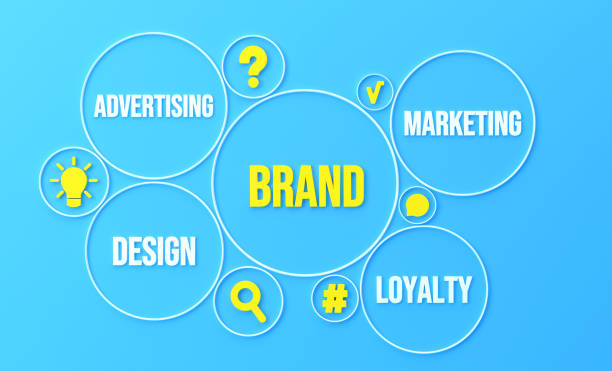Brand development is not just about a logo or tagline. It is about telling a story that connects with people on a deeper level. A strong narrative makes a brand memorable and helps customers relate to it. Businesses that use storytelling effectively create trust, loyalty, and engagement.
This article will cover techniques that make storytelling a powerful tool for brand development. You will learn how to build an emotional connection, craft a strong narrative, and use different storytelling methods to strengthen your brand.
Why Storytelling Matters in Brand Development
People love stories. From childhood, humans are drawn to tales that entertain, inspire, and teach. In marketing, storytelling is a way to communicate values, mission, and purpose. When done well, it helps brands stand out in a crowded market.
A strong story makes a business more than just a company selling products. It becomes something people relate to and trust. Instead of just promoting a product, storytelling allows brands to share experiences and emotions that customers can connect with.
Building a Strong Narrative for Brand Development
A brand story should be simple yet meaningful. It must answer three main questions:
- Who are you? – This includes the brand’s history, values, and mission.
- What do you do? – Explain what products or services you provide.
- Why does it matter? – Show how your brand makes a difference in people’s lives.
A compelling brand story is not just a list of facts. It is an emotional journey that highlights struggles, successes, and the reason behind the brand’s existence.
The Power of Emotion in Brand Storytelling
Emotions drive decisions. People may justify a purchase with logic, but their initial reaction is often emotional. Successful brands use this to create messages that touch their audience on a personal level.
- Empathy: Understanding customer pain points and addressing them builds trust.
- Inspiration: Stories of growth, perseverance, and success encourage loyalty.
- Happiness: Positive stories create a feel-good experience that people want to share.
A story that triggers an emotional response is more likely to be remembered and shared, increasing brand awareness.
How to Make Your Brand Story Authentic
Authenticity is key in brand development. People can tell when a brand is being genuine and when it is just trying to sell something. To create an authentic story:
- Stay true to your values. Do not try to be something you are not.
- Use real experiences. Share the struggles and successes that shaped your business.
- Show personality. Let your brand voice reflect your true character.
When a story is real and honest, customers feel a deeper connection with the brand.

Using Characters to Strengthen Brand Development
Characters make stories engaging. In brand storytelling, characters could be:
- The Founder: Sharing the journey of how the brand started.
- The Customer: Featuring real experiences from satisfied buyers.
- The Team: Highlighting the people behind the business.
When customers see real people behind a brand, it makes the story more relatable and trustworthy.
The Role of Conflict in a Strong Brand Story
Every great story has conflict. It is what keeps people interested and invested. In brand development, conflict could be:
- A challenge the company faced and overcame.
- A problem customers struggle with and how the brand helps solve it.
- A mission to change something for the better.
Struggles and challenges make brands more human. They show growth and resilience, making customers feel part of the journey.
How Consistency Builds Brand Recognition
A brand story must be the same across all platforms. Whether it is on a website, social media, or advertisements, the message should be clear and consistent.
- Use the same tone and voice. This builds familiarity.
- Keep visuals aligned. Colors, fonts, and design elements should match.
- Repeat key messages. Reinforcing your values strengthens brand identity.
When customers see the same story everywhere, they begin to associate it with the brand.
Visual Storytelling for Brand Development
Words are powerful, but images and videos make stories even stronger. A well-designed visual story can capture attention faster than text alone.
- Photos: Show behind-the-scenes moments or customer experiences.
- Videos: Share testimonials, product demonstrations, or brand history.
- Infographics: Present information in a clear and engaging way.
A mix of visual and written storytelling keeps audiences engaged and makes the message more impactful.
Social Media and Brand Storytelling
Social media is a great place to share brand stories. Platforms like Instagram, Facebook, and Twitter allow businesses to connect with their audience in real time.
- Share user-generated content. Customers love seeing their stories featured.
- Post behind-the-scenes content. Show the real people behind the brand.
- Use storytelling captions. Short but meaningful stories can make a big impact.
Social media helps brands stay connected with their audience and keeps the story alive.

Customer Stories as a Powerful Marketing Tool
Nothing builds trust like real customer experiences. When people see others benefiting from a brand, they are more likely to trust it.
- Case studies: Show real-life examples of how the brand helped customers.
- Testimonials: Let satisfied buyers share their experiences.
- Before-and-after stories: Show the transformation your product or service provides.
Customer stories create credibility and make marketing messages more believable.
The Influence of Brand Values in Storytelling
A brand story should reflect its values. Customers want to support businesses that share their beliefs.
- Sustainability: Brands that care about the environment attract eco-conscious buyers.
- Community involvement: Supporting local causes builds goodwill.
- Innovation: Businesses that push boundaries inspire trust and admiration.
When a brand’s values align with its audience, it builds loyalty and long-term relationships.
How to Keep Your Brand Story Fresh and Relevant
A brand story should not be static. It must grow and evolve with time.
- Update your message. As the brand expands, the story should reflect new goals.
- Listen to customer feedback. Adapt based on what your audience wants.
- Stay current with trends. Keep your storytelling style fresh and relatable.
A story that changes with time stays interesting and keeps people engaged.
Final Thoughts
Brand development through storytelling is one of the most effective ways to connect with customers. A strong, authentic story builds trust, loyalty, and recognition. By using emotions, characters, visuals, and social media, businesses can create a lasting impact.
A well-crafted brand story is not just about selling a product. It is about creating an experience that people want to be part of.








